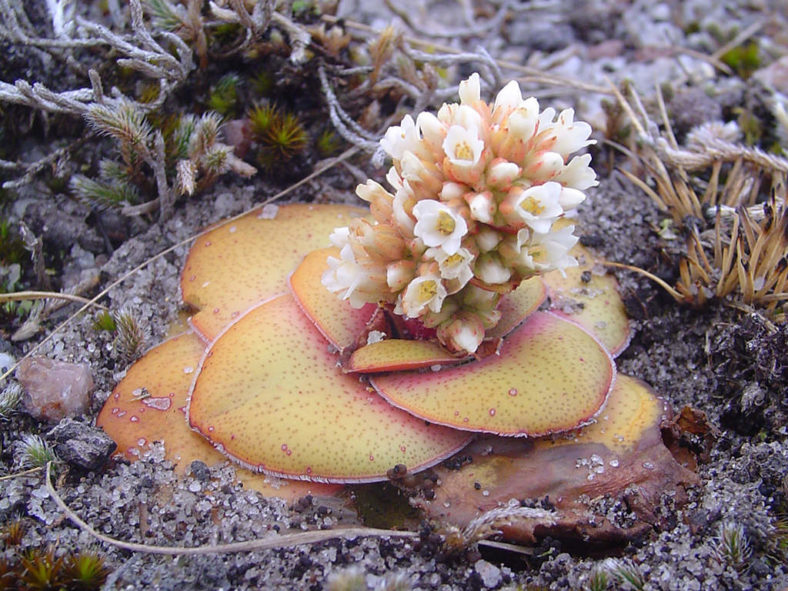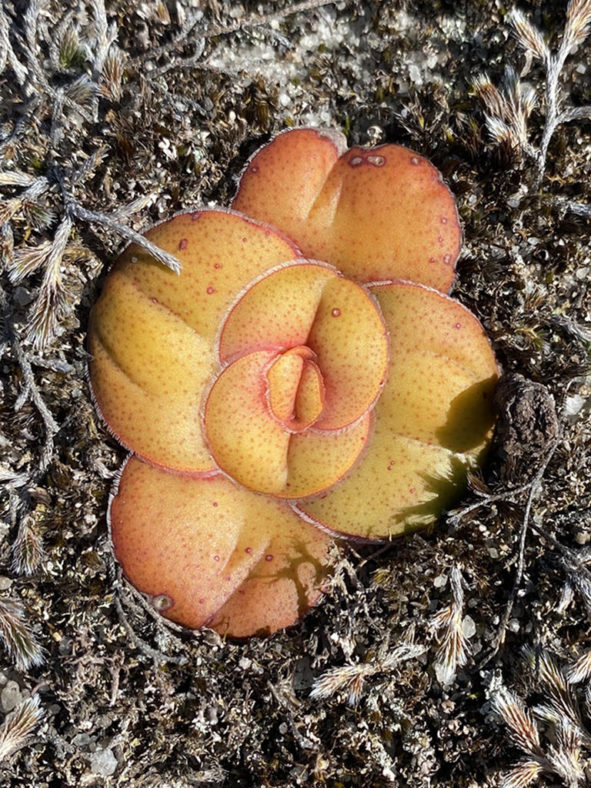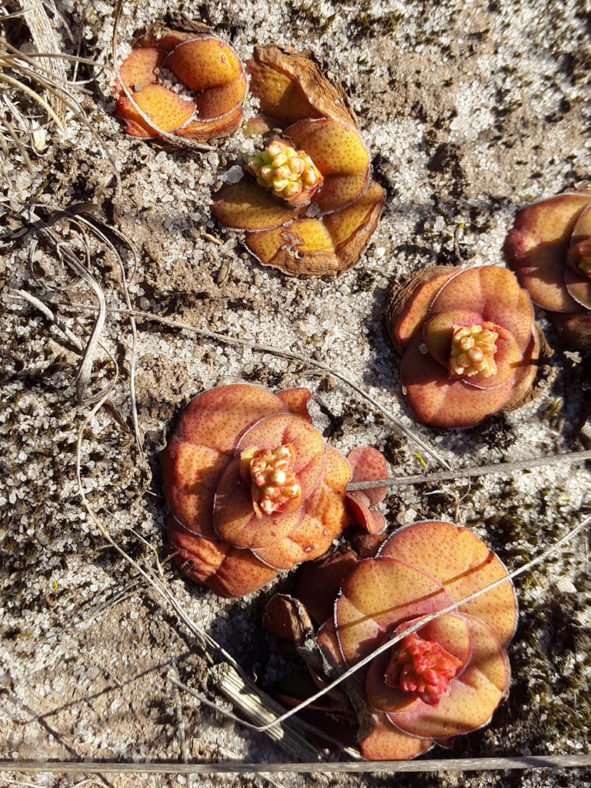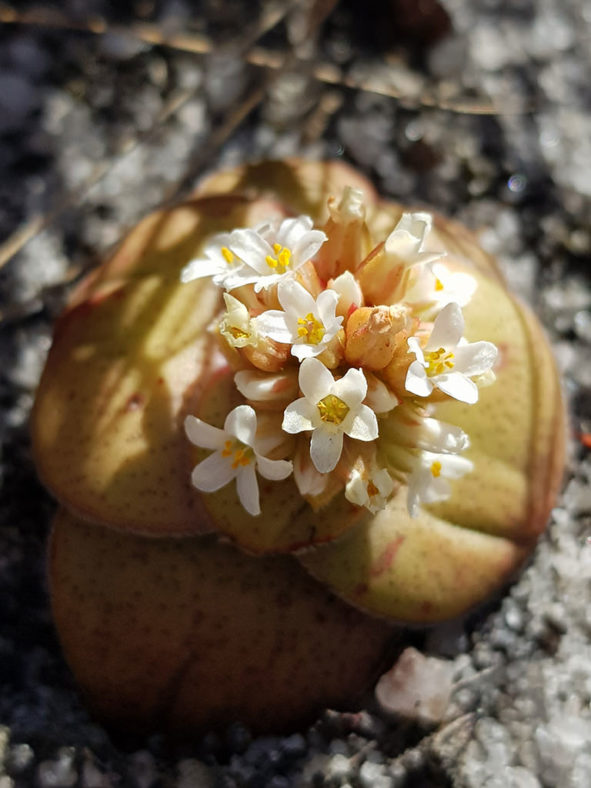Scientific Name
Crassula compacta Schönl.
Synonym(s)
Crassula compacta var. elatior, Crassula massonioides, Crassula mossiae, Crassula mossii
Scientific Classification
Family: Crassulaceae
Subfamily: Crassuloideae
Genus: Crassula
Etymology
The specific epithet "compacta (pronounced kom-PAK-tuh)" means "compact" and refers to the compact growth habit of this species.
Origin
Crassula compacta is native to South Africa. It occurs in the mountainous regions of Mpumalanga and Free State provinces, growing in open patches in moist grassland or often on shallow soil on rocks.
Description
Crassula compacta is a dwarf succulent that forms one or two, rarely several rosettes of fleshy, green to reddish brown leaves with darker spots and a dense row of marginal cilia. It can grow up to 8 inches (20 cm) tall, including inflorescence. The leaves are ovate or obovate, measuring up to 1.4 inches (3.5 cm) long and 1 inch (2.5 cm) wide. The old leaves remain attached to the stems.
The flowers are sweetly scented, tubular, white to cream, and appear in a spike-like thyrse from late spring to early fall.

How to Grow and Care for Crassula compacta
Light: C. compacta prefers full sun to partial shade. However, intense afternoon sun on the hottest summer days can burn the leaves of the plant. Therefore, a place with morning sun and afternoon shade would be perfect. Indoors, place your plant in a window that receives at least 6 hours of direct sunlight.
Soil: This plant is not particular about soil pH but requires very porous soil with excellent drainage. Use commercial potting soil mixes designated for succulents, or mix your own.
Temperature: Like most Crassulas, this succulent will tolerate short-term freezing, but extremes of cold or heat will cause it to lose leaves and die. C. compacta can withstand temperatures as low as 25 °F (-3.9 °C). USDA Plant Hardiness Zones 9b to 11b, 25 to 50 °F (-3.9 to 10 °C).
Watering: Avoid overwatering using the "soak and dry" method, where the soil is soaked with water, slowly drained, and left to dry out before watering again. Reduce watering in winter. Potted plants require more frequent watering than those in the ground.
Fertilizing: C. compacta does not need much feeding but will benefit from a small amount of organic fertilizer when it starts actively growing in mid-spring.
Repotting: Repot as needed, preferably in spring, at the beginning of the period of active growth of the plant. Make sure the soil is dry before you begin repotting.
Propagation: This succulent is generally started by leaves or offsets at the beginning of the growing season. C. compacta can also be grown from seeds. Sow the seeds in the spring or summer.
Learn more at How to Grow and Care for Crassula.
Toxicity of Crassula compacta
C. compacta is nontoxic to people and pets.
Links
- Back to genus Crassula
- Succupedia: Browse succulents by Scientific Name, Common Name, Genus, Family, USDA Hardiness Zone, Origin, or cacti by Genus
Photo Gallery
Click on a photo to see a larger version.


